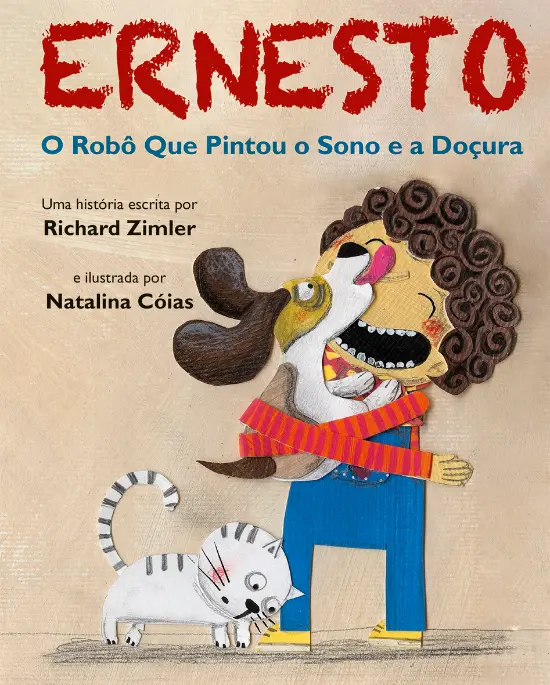We spoke with author Richard Zimler about his seventh children’s book, entitled Ernesto, why he wrote it and how he has taken it to schools.
The story features a boy robot programmed to be an artist and paint with feelings. In the process, Ernesto discovers emotions and develops self-awareness. It’s a story of affection and respect for human and non-human identity.
Inspired by this books, we invited Richard Zimler to share more about why he wrote this book and how he has been taking it to schools.
The origin of the story
The origin of the book dates back more than 20 years, when Richard read about the laws of robotics defined by science fiction author Isaac Asimov—three rules to control the behaviour of robots—which led him to reflect on the need to also define rights for robots:
“I thought it was all good, funny, important, but my mind must work differently. Because I thought: what about robots? Don’t they have rights? If a robot develops memory, desires, difficulties, if it wants to have a future and fulfill its dreams, don’t we need laws that also defend it?”
Ernesto was initially written as a short story for adults, which was published in the United States in a small magazine. Twenty years later, a British publisher took an interest in the story, saying it would make an excellent children’s book. Richard wrote the story for children, but it was through Portuguese Porto Editora and in collaboration with illustrator Natalina Cóias, that Ernesto reached bookstores in 2024.
«AI literacy represents the technical knowledge, durable skills, and future ready attitudes required to thrive in a world influenced by AI. It enables learners to engage, create with, manage, and design AI, while critically evaluating its benefits, risks, and ethical implications.»
Ernesto at school
Richard has been visiting schools in Portugal for many years, to talk about his books – he has participated in over 400 sessions. His main goal is to inspire children to become future writers, expressing what they feel, observe and to think freely.
“I think the world needs storytellers. The storytellers who are seven, eight, nine years old today will possibly have another way of telling a story that I cannot predict. I want to participate, if I want to, in that story of literature. I want to be part of that continuum of literature from an adult to a young person.”
In Ernesto’s case, invitations for a conversation between writer and students have come mainly from Primary school teachers. The students read the book in the classroom and prepare to welcome the author for a reading and conversation session.
Children explore the book in various ways, focusing on themes such as:
- Emotions
- Expression and representation of emotions
- Memories
- Identity
- The difference between humans and machines
Talking with the author
The sessions begin with Richard Zimler introducing himself to the children, telling them who he is, why he wrote the book, and what the writing and illustration process was like. Richard makes a point of sharing the doubts, mistakes, and uncertainties he encountered during the creative process, so that children understand that learning is a process of trial and error, even for adults.
Richard reads excerpts from the story and asks questions. One of the most powerful questions is about the moment when Ernesto looks in the mirror and realizes that he exists, which creates a crisis:
‘I am not just a machine. I have my own life.’
The writer then asks the children if they remember the first time they realized they were independent from their parents. Many share touching memories, such as:
“Yes! I was sitting on my mother’s lap and I remember looking at her face and realizing that I was different, that I was the person looking at my mother.”
The children ask various questions, some of which are quite surprising, as this question from a student over seven years old from the city of Fafe:
“How many books have you not written yet? – a wonderful, almost Buddhist question.”
Imagination and the future
When talking to children, the author believes it is very important that they feel welcomed and encouraged to use their imagination. Because when the future is uncertain, we need to exercise our imagination to live better in the present and create new solutions for the future – “children are the future.”
Imagination is also expressed through the drawings made by children before or after the session. They are often inspired by Ernesto to make portraits or self-portraits.
For Richard, this training is essential:
“Young people today will create ways of dealing with machines and robots and Artificial Intelligence that we, at 69 years of age, cannot even imagine. And that’s beautiful. It’s a future that is not predictable. How wonderful.”


